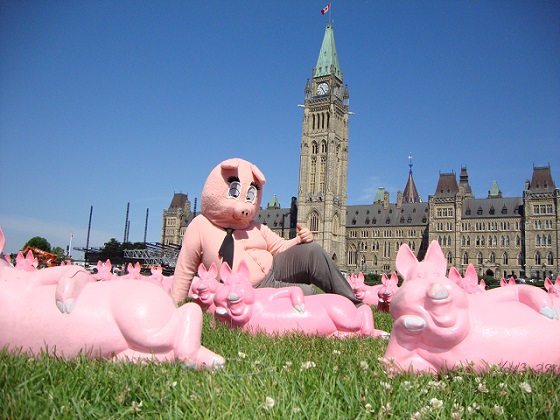Alberta
Alberta’s close brush with blackouts stiffens Moe’s resolve
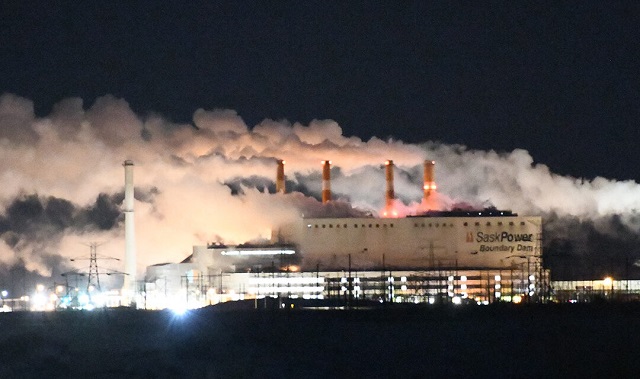
From the Frontier Centre for Public Policy
“We will not risk plunging our homes, schools, hospitals, special care homes and our businesses into the cold and darkness because of the ideological whims of others.”
Alberta’s close brush with possible rolling blackouts stiffens Moe’s resolve to keep the lights on.
Moe reiterates: “We will not attempt the impossible when it comes to power production”
The past weekend proved to be a close-run thing for the Alberta electrical grid, and Saskatchewan Premier Scott Moe is making statements resolving he won’t allow that to happen here.
Specifically, after having nearly completely divested itself of coal-fired power production, Alberta’s dramatic buildout of wind and solar proved impossible to keep the lights on in that province when the chips were down and temperatures hit -35 C, or worse.
“In Saskatchewan, we will not attempt the impossible when it comes to power production in our province,” Moe said in a post on X and other social media the evening of Monday, Jan. 15.
“We will not risk plunging our homes, schools, hospitals, special care homes and our businesses into the cold and darkness because of the ideological whims of others.
“To support the ongoing power demands across western Canada, Boundary Dam 4 has been restarted to ensure families can continue to keep the heat on. Net zero by 2035 is not only impossible, it’s irresponsible as it would leave Saskatchewan and Western Canadian families freezing and in the dark.”
It was in response to the extraordinary events that occurred in Alberta over the weekend, in which Saskatchewan played a key part. And it was also a tacit acknowledgement that as much as SaskPower’s been trying to wean itself off coal, it just can’t do it yet. We still need it to keep the lights on.
The Alberta Electric System Operator (AESO) declared four “grid alerts,” over four days in a row, starting the afternoon of Friday, Jan. 12. Desperately cold temperatures drove up demand for power, just as the same temperatures reduced wind power generation to nothing at times, and close to nothing for most of the weekend. And since the mass of cold air stretched from the Yukon to Texas, every grid operator in between was in the same boat – high demand but short supply. The Southwest Power Pool, which incorporates parts of 14 states from south of Saskatchewan to the Texas Panhandle, as well as Texas grid operator ERCOT, all put out various forms of alerts suggesting their clients reduce electrical consumption.
Staring into the abyss
The first three of Alberta’s grid alerts ran from mid-afternoon until late evening, but the fourth occurred for an hour on Monday morning, as the workweek began.
The second of those grid alerts turned out to be the most significant. On Saturday, Jan. 13, Alberta came within a half-hour of rotating blackouts, an Alberta Electric System Operator spokesperson told CBC News on Jan. 15, confirmed by Alberta Affordability and Utilities Minister Nathan Neudorf the same day.
Indeed, the province stood at the brink of the abyss Saturday night, as rotating blackouts would have impacted different areas of the province for 20 to 30 minutes at a time, as temperatures ranged from -30 to -45 C, depending on where you were in the province. As the province’s grid-scale batteries neared depletion, and there was nothing left to call upon, the AESO and provincial government put out an emergency alert to all cellphones and TV screens, asking Albertans to shut off and unplug everything they could, from electric vehicle chargers to ovens to bathroom fans.
SaskPower ups its game
Alberta had run out of reserves, and with British Columbia unable to provide much more in the way of additional power, and Montana unable provide much at all, Saskatchewan’s Crown utility SaskPower responded, by sending 153 megawatts westward.
And that, in itself, was extraordinary, because limits were pushed to provide Alberta with as much as possible on the intertie between the two provinces.
SaskPower spokesperson Joel Cherry told Pipeline Online by email, “One hundred fifty-three megawatts is the interconnection’s maximum capacity, but it has been derated to 90 megawatts for the past several months because of ongoing work at a interconnection station at the border. AESO and SaskPower Grid Control have agreed to temporarily increase the transmission capacity to make the extra 63 MW available to Alberta when they declare energy alerts.
Contingency reserve had run out
Generally speaking, power needs to be consumed at the instant its produced. There is very little in the way of grid-scale storage in the Canadian electrical grid, although Alberta has built 10 grid-scale batteries totaling 190 megawatts capacity. All of that capacity would come into play Saturday evening.
Grid operators must maintain a small amount of excess capacity at all times, known as a “dispatched contingency reserve” (DCR) The North American Electric Reliability Corporation (NERC) standard is to maintain at least 4 per cent DCR. That’s because if the DCR runs out, all sorts of bad things happen, with voltage drops and frequency variance which then can lead to cascading brownouts, including additional power generating units tripping off and whole areas going without power.
With demand hovering around 11,800 megawatts, four per cent would have been around 472 megawatts DRC. Instead, for the better part of an hour, the DCR was 20 megawatts, or 0.1 per cent, a razor thin margin. The extra 63 megawatts SaskPower sent in part meant the difference between rotating blackouts or not.
In a very real way, it was payback for Alberta’s weeks-long help for SaskPower during the outage of the Poplar River Power Station at Coronach, Saskatchewan. For weeks on end, Alberta supplied Saskatchewan with around 150 megawatts for parts of the day to keep the lights on in this province.
BC played critical role, too
On any given day, imports and exports of power between Alberta and British Columbia will often run up to 600 megawatts going either direction. But with BC also in the deep freeze, it didn’t have much to give at various points during the weekend, including parts of the crucial Saturday evening. Indeed, around the time the grid alert was first sounded on Saturday, Alberta was still exporting 38 megawatts to British Columbia, according to X bot account @ReliableAB, which posts hourly data from the AESO on the status of the Alberta grid.
For a few hours, BC Hydro was able to ramp up its exports to Alberta during the crucial time. At 5:39, they were exporting 251 megawatts to Alberta, nearly 100 megawatts more than Saskatchewan. For the next few hours they sent around 200 megawatts, but it was not enough, and the AESO sent out its alert.
Additionally, during the third grid alert on Sunday, British Columbia ramping up its power exports at a critical time saved the day, as the Alberta Dispatched Contingency Reserve had briefly hit zero. BC bumped its exports up to 496 megawatts while Saskatchewan contributed 153 and Montana nine. Those increased megawatts from British Columbia appeared to make all the difference on that day.
The cat came back, and so did Unit 4
While all of this was going on, SaskPower spent the weekend getting its coal fired power station Boundary Dam Unit 4 back into play. It’s been on cold standby for months. Officially, by federal regulations it was supposed to retire Dec. 31, 2021, but SaskPower has been forced to bring it back into service multiple times to fill a need, such as when Poplar River went offline last June. It was 139 megawatts that could have been used, but SaskPower has shown reluctance to bring it back into the game, as it were.
And that’s what Moe alluded to in his social media post, saying, “We will not risk plunging our homes, schools, hospitals, special care homes and our businesses into the cold and darkness because of the ideological whims of others.”
This was an oblique reference to the push by the federal government to shut down coal and natural gas-fired power generation by 2035, according to the proposed Clean Electricity Regulations, using similar words that Moe has expressed before. The federal preference is for more renewables, in particular wind and solar.
Several years ago, the federal government and Saskatchewan reached an equivalency agreement, recognizing the Boundary Dam Unit 3 Carbon Capture and Storage Project and therefore allowing a few more years operation out of other coal units. But to get that agreement, SaskPower had to agree to adding a further 3,000 megawatts of wind and solar by 2035, according to SaskPower president and CEO Rupen Pandya in an interview Sept. 25, 2023.
Pandya said, “When we signed the equivalency agreement with the federal government in 2014 to allow us to keep using coal to the end of 2030, part of that agreement required us to build out renewables in the province, so that we could operate coal assets, coal generators, past their end of life. And that’s what we’ve been able to do. And we continue to do. So, part of the build out of renewables that’s required as part of the equivalency agreement, that 3,000 megawatts that we need to put in place by 2035. I think 2,000 by 2030. A good tranche of that will be in that south central part of Saskatchewan around the Coronach. So we currently have in the market an RFP for 700 megawatts of wind and solar in the Coronach region, so it’ll will actually go into power, if all goes well with RFPs, in 2027.”
On a typical fall day, SaskPower’s total power demand hovers around 3,000 megawatts. On a cold winter day, it’s closer to 3,500 megawatts. But that’s before widespread adoption of electric vehicles, which the federal government is also trying to force upon Canadians.
Saskatchewan held up to the cold
SaskPower’s Joel Cherry told Pipeline Online on Jan. 15, “Saskatchewan’s system has held up during the extreme cold. We had no major issues.”
However, “Poplar River Power Station was operating at reduced capacity earlier in the weekend because of issues with coal supply. As of yesterday (Sunday) we are back to normal operations there.”
That means the reduced capacity occurred the same day Alberta was stretched nearly to the breaking point.
Asked if we lost a major unit, while Alberta was at the same time in crisis, what did we have for backup? Was there additional capacity available from Manitoba and/or Southwest Power Pool?” Cherry replied, “SaskPower has maintained adequate reserves to allow for the continued stability of the system even if we lost a large unit. We have also been importing from Manitoba and the SPP when available.
Collapse of wind
Major factors in Alberta’s power woes were the utter collapse of wind and solar power generation. Even at its best, solar power production during the day was around a third of maximum capacity.
Wind turbines started shutting down Thursday night as temperatures plummeted below -30 C, the temperature where cold brittle behaviour of materials risks catastrophic failure of the turbines. The three evening grid alerts all came on as the sun went down and the roughly 500 megawatts (of 1,650 megawatts capacity) faded with the setting sun. On Friday, Alberta’s wind generation fell to 6 megawatts at one point. It was minimal on Saturday. On Sunday morning, multiple times wind hit zero – not one megawatt from the 4,481 megawatts of wind generation capacity.
SaskPower’s Where Your Power Comes From webpage noted on Friday, Jan. 14, Saskatchewan’s 617 megawatts of grid-scale wind produced a 24-hour average of 21 megawatts. On Saturday, that number was 19. On Sunday, the average was 22 megawatts. Unlike the previous week, where there were seven days where wind in Saskatchewan hit zero power output, Jan. 12-14 did not have any periods of zero.
“We had four hours of less than 10 megawatts wind output on Jan 12, despite the low average through the day on Jan. 13 we only had a half hour below 10 megawatts and on Jan 14 we had 7.8 hours below 10 megawatts,” Cherry said.
Ten megawatts is 1.6 per cent of total grid-scale wind capacity in Saskatchewan.
As for Unit 4, in April of 2023, Pipeline Online reported Cherry said at the time, “We’re going to keep BD 4 in laid up status until Great Plains Power Station comes online, or until March 31, 2024.”
The most recent plan, as of April, 2023, was to shut down, for good, Unit 4 by March 31, 2023. Whether Moe’s statement on Jan. 15 will extend that is unknown at the time of writing.
Brian Zinchuk is editor and owner of Pipeline Online, and occasional contributor to the Frontier Centre for Public Policy. He can be reached at [email protected]. For further information read the original publication here.
Alberta
Parent and gender dysphoria groups granted intervenor status in New Brunswick school policy case
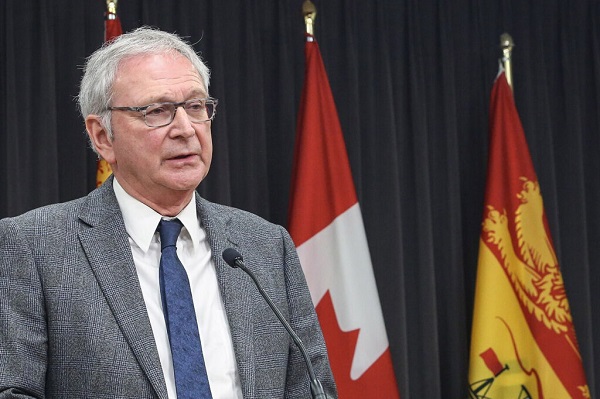
News release from the Justice Centre for Constitutional Freedoms
The Justice Centre for Constitutional Freedoms is pleased to announce that two groups, Gender Dysphoria Alliance and Our Duty Canada, have been jointly granted intervenor status in a constitutional challenge to a New Brunswick education policy. The policy requires that parents be notified when their child intends to undergo a gender transition by using a different name and pronouns at school.
On August 17, 2020, the New Brunswick government created Policy 713, which prohibited teachers from informing parents that their child had adopted a new name or pronouns at school (unless the child consented to such disclosure).
On June 8, 2023, the government changed the policy to require that parents of students under 16 years of age be notified by the school before the formal use of a different name or pronoun. “Formal” refers to the use of names and pronouns in the classroom and in school records.
The change to Policy 713 brought a firestorm of criticism and media coverage because it was the first of its kind in Canada to support parental rights on this issue. New Brunswick Premier Blaine Higgs stated that he believes he has the support of parents in the province on this issue.
The Canadian Civil Liberties Association (CCLA) brought a constitutional challenge against the Province of New Brunswick as represented by the Minister of Education and Early Childhood Development, on September 6, 2023. The CCLA argues that Policy 713 infringes the students’ rights to freedom of expression, to equality, and to life, liberty and security of the person.
“The Canadian Civil Liberties Association has filed a court challenge against the right of parents to be fully informed about what is happening with their own children at school,” stated John Carpay, President of the Justice Centre.
“The Supreme Court of Canada explained in B.(R.) v. Children’s Aid Society of Metropolitan Toronto that the parental interest in bringing up, nurturing and caring for a child, including medical care and moral upbringing, is an individual interest of fundamental importance to our society,” continued John Carpay.
On May 2, 2024, Justice Richard Petrie of the New Brunswick Court of King’s Bench granted intervener status to two groups: Gender Dysphoria Alliance is comprised of transsexual adults who seek to promote an evidence-based approach to gender dysphoria. Our Duty Canada is a peer support network for parents of children struggling with gender dysphoria and transgender ideation. As intervenors, they now have the right to present evidence to the court. The Justice Centre is providing for the legal representation of both groups, which seek to uphold the constitutionality of the amended Policy 713.
Prior to granting intervenor status, on March 5, 2024, Justice Petrie ordered that any proposed intervenors file the evidence they intend to present.
Gender Dysphoria Alliance and Our Duty Canada submitted the following testimonies as evidence:
- The written testimony of a New Brunswick mother whose child underwent a social transition in school, about which she was not informed;
- The written testimony of a young woman from Alberta who began to adopt new pronouns at school without her parents’ knowledge; she ultimately reversed course (detransitioned) after her parents became aware of her situation and were able to assist her;
- The written testimony of the young woman’s father.
Karin Litzcke of Our Duty Canada says, “[Our] members are pleased to have an opportunity to contribute to the development of jurisprudence in this area. What has happened to us could happen to any parents under policies that promote secrecy from families. We are grateful to the Justice Centre for its assistance in advocating for the interests of children and parents in court.”
Speaking on behalf of Gender Dysphoria Alliance, Aaron Kimberly says, “The Gender Dysphoria Alliance is pleased with the decision to grant us intervention status in this case. We believe New Brunswick’s policy is an important safeguarding measure for children experiencing gender incongruence, since we know that most kids with this experience turn out to be gay or lesbian, not trans. Prematurely labelling kids “trans” and socially transitioning them is a psychosocial intervention that risks putting pre-gay kids onto an unnecessary medical pathway.”
Hatim Kheir, lawyer for both groups, says, “The Supreme Court has affirmed that parents in Canada have the right to guide the moral upbringing of their children. This case provides an opportunity for the Court to apply those rights to issues surrounding gender which are becoming increasingly relevant in our society.”
Alberta
Canadian Christian chiropractor fights ‘illegal’ $65,000 fine for refusing to wear mask
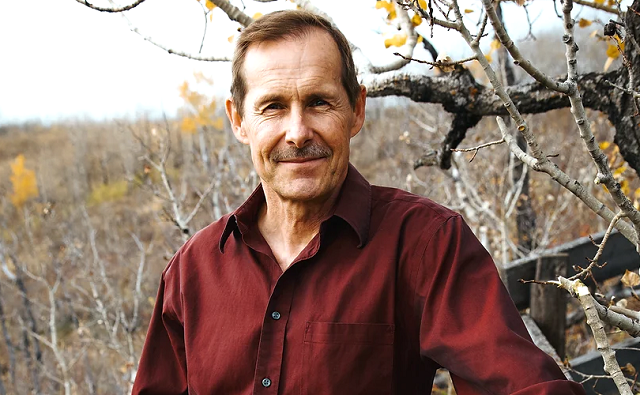
From LifeSiteNews
Dr. Curtis Wall went against the College of Chiropractors of Alberta’s COVID mask mandate in 2020 and the organization has been pursuing disciplinary action ever since.
The legal team for Dr. Curtis Wall, a Canadian chiropractor who was recently fined $65,000 by his medical college for not wearing a mask in 2020 despite the fact public health orders last year were nullified by a court, has vowed to fight the “illegal” fine, saying that Wall was targeted because he is a “Christian man of integrity and principle.”
“Dr. Wall should not pay any fines or costs when the public health orders he was charged with not following have been declared void by the courts,” said Wall’s legal team, Liberty Coalition Canada (LCC), in a press release.
“He is a Christian man of integrity and principle — attributes that make him a target for government overreach in the era of COVID.”
Wall was practicing in Calgary in 2020 when the COVID crisis was gearing up, went against Alberta’s public health orders and chose not to wear a mask during patient visits. Many of his patients also decided to not wear masks during their visits, which quickly drew the ire of College of Chiropractors of Alberta, which had mandated that all chiropractors wear masks.
Wall, who has been seeing patients for the last 25 years with a pristine record, was then targeted by the College, which tried to strip him of his license to practice. The College was unable to strip Wall of his license and he continued to practice, sans mask in 2021 and 2022.
In 2021, the College had brought against Wall, as per the LCC, “a long list of charges of unprofessional conduct against Dr. Wall, most of which related to Dr. Wall not wearing a mask while treating patients and permitting his patients to not wear a mask.”
Wall was then brought before a disciplinary hearing Tribunal to mediate his case, which went well into 2022, and had placed a publication ban on all “identities of all witnesses,” including Wall’s.
James Kitchen, Wall’s lawyer from the LCC, was successful in getting the publication ban lifted, as the LCC noted due to the College “wishing to avoid likely defeat before the courts” regarding keeping the ban in place.
Fined chiropractor says college did not recognize his ‘Christian convictions’
In 2023, the Tribunal ruled against Wall entirely and in favor of the College.
The Tribunal’s decision noted the LCC is “riddled with errors of fact and law and is so poorly decided it is an embarrassment to the chiropractic profession.”
Wall spoke with LifeSiteNews and observed that while in his point of view he does not feel his fines and costs imposed on him by the college “are a direct result of my Christian faith,” he did note that the tribunal did “not recognize my honest Christian convictions as a valid reason for my not wearing a mask.”
“They put placed no merit in the argument that as a Christian I believe I am created in the image of God,” Wall said.
“My face is an expression of Him. Having man arbitrarily mandate that I cover my face is an affront to that expression and signifies that I am living in the fear of man, not by faith. So, in all, I don’t feel directly persecuted as a Christian, but certainly indirectly.”
Wall told LifeSiteNews that in his opinion the college could have “handled this issue much differently.”
“There must always be room for exceptions to a rule. I did present a doctor’s note to verify my inability to wear a mask. They did not place any weight on that note. They blamed me for ‘self-diagnosing’ my problem,” Wall said.
“Number one, I’m a doctor. I think eight years of schooling has given me some wisdom to diagnose my own signs and symptoms. Number two, if someone eats a peanut and their throat swells shut, can they not diagnose themselves and stay away from nuts? It’s not a problem to self-diagnose.”
Wall said that despite his legal team presenting four expert witnesses to demonstrate “the obvious inadequacy and lack of efficacy in mask-wearing, not to mention the harms as well,” the college “did not cite the record once in their verdict.”
He noted that “common sense, science and past and present studies overwhelmingly demonstrate” the lack of efficacy regarding mask-wearing.
The LCC noted that although both Kitchen and Wall hoped for an “unbiased decision from the tribunal,” they knew it was more “likely the tribunal members would lack the courage to oppose the government’s COVID narrative by accepting the scientific evidence masks are utterly ineffective at preventing the transmission of COVID and harmful to wearers.”
“Nonetheless, it is shocking the lengths the tribunal went to dismiss the evidence of Dr. Wall, three of his patients, and his four expert witnesses while blithely accepting all the evidence of the College.”
Wall’s charges laid despite a recent court ruling nullifying all Alberta COVID health orders
According to LCC, the charges brought against Wall show that the College of Chiropractors of Alberta has “ignored the law” relating to non-criminal COVID-era charges handed out in the province.
As reported by LifeSiteNews before, last year a judge from Alberta ruled that politicians violated the province’s health act by making decisions regarding COVID mandates without authorization. This ruling came from the Alberta’s Court of Kings Bench’s Ingram v. Alberta decision, which put into doubt all cases involving those facing non-criminal COVID-related charges in the province. In effect, the ruling struck down and nullified all health orders issued by Dr. Deena Hinshaw, Alberta’s former chief medical officer of health.
As a result, multiple people facing charges, such as Dr. Michal Princ, pizzeria owner Jesse Johnson, café owner Chris Scott, and Alberta pastors James Coates, Tim Stephens, and Artur Pawlowski who were jailed for keeping churches open under then-Premier Jason Kenney, have had COVID charges against them dropped due to the court ruling.
The Alberta’s Court of Kings Bench’s Ingram v. Alberta decision put into doubt all cases involving those facing non-criminal COVID-related charges in the province.
As a result of the court ruling, Alberta Crown Prosecutions Service (ACPS) said Albertans facing COVID-related charges will likely not be convicted but instead have their charges stayed.
However, last year, the College, and of important note after the Ingram ruling, ordered Wall to pay $65,000 in fines and costs “under threat of immediately losing his license to practice if he does not pay,” the LCC said.
Chiropractor’s lawyer to fight fine tooth and nail
According to the LCC, the College’s new complaints director said she will enforce the tribunal’s court-defying order and mandate Wall pay the $65,000.
Because of this, Kitchen submitted an application to the College “to prevent this injustice” against Wall, the LCC noted.
“The Application will be heard on June 21. It will be heard virtually and is open to public, although the College has erected a number of barriers to people attending its hearings. For one, people must register with the hearings director and must do so many days in advance,” he told LifeSiteNews.
“The Tribunal elected to ignore the Ingram decision despite issuing its decision over two weeks after Ingram was released by the Court.”
Kitchen noted that the Tribunal had a lawyer advising it who was being paid some $700 an hour. He told LifeSiteNews that “Tribunals can do whatever they want and often do.”
“Only if the affected person takes further legal action can they hold the Tribunals accountable. And even then, that’s very difficult because the first appeals are to the councils of the Colleges, which almost always rubber stamp whatever the Tribunals decide. Real accountability isn’t had until the impugned professional is able to reach the Court of Appeal, which of course takes years and an enormous amount of funding for lawyer fees,” Kitchen said.
Kitchen is working Wall’s case at discounted rates and noted that high legal costs in such cases dealing with tribunals, who can drag things on for years, to him appear to be a tactic the Colleges count on for “avoiding accountability.”
The LCC estimates the College, which is funded through payments from all chiropractors, paid some $600,000 in legal fees to fight Wall.
“LCC asks supporters to donate toward Dr. Wall’s case so he and Mr. Kitchen can hold the College of Chiropractors of Alberta accountable and bring an end to the unjust persecution of Dr. Curtis Wall. Liberty Coalition Canada is assisting Dr. Wall with his legal expenses through the Legal Defense Fund.”
Kenney quit after losing the confidence of his United Conservative Party (UCP) members for backtracking on his promise to not impose a COVID vaccine passport. Under Kenney, thousands of businesses, notably restaurants and small shops, were negatively impacted by severe COVID restrictions, mostly in 2020-21, that forced them to close their doors for a time. Many never reopened. At the same time, as in the rest of Canada, big box stores were allowed to operate unimpeded.
Under Kenney, thousands of nurses, doctors, healthcare and government workers lost their jobs for choosing to not get the jabs, leading Premier Danielle Smith to say – only minutes after being sworn in – that over the past year the “unvaccinated” were the “most discriminated against” people in her lifetime.
Recently, LifeSiteNews reported on how Alberta-based Rath & Company is in the process of putting together a class-action lawsuit against the Alberta government on behalf of many business owners in the province who faced massive losses or permanent closures from what it says were “illegal” COVID public health orders enacted by provincial officials.
-

 COVID-1922 hours ago
COVID-1922 hours agoKenyan doctor: WHO pandemic treaty aims to ‘maim and kill’ and ‘establish a one-world government’
-
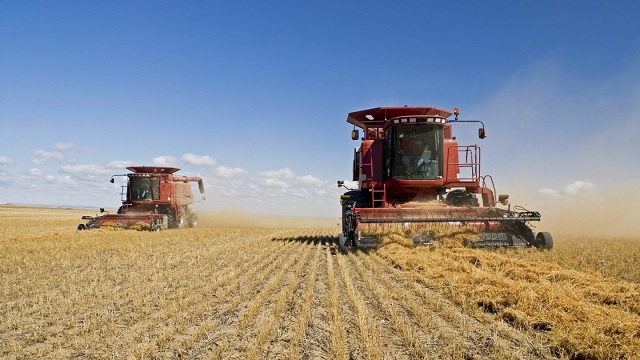
 Agriculture2 days ago
Agriculture2 days agoFarming group accuses Canadian gov’t of trying to blame agriculture for ‘climate change’
-
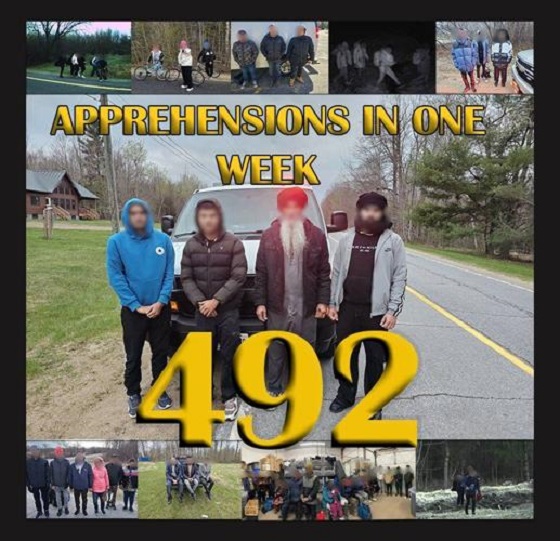
 illegal immigration1 day ago
illegal immigration1 day agoNorthern border apprehensions highest in US history first 6 months of fiscal ’24
-
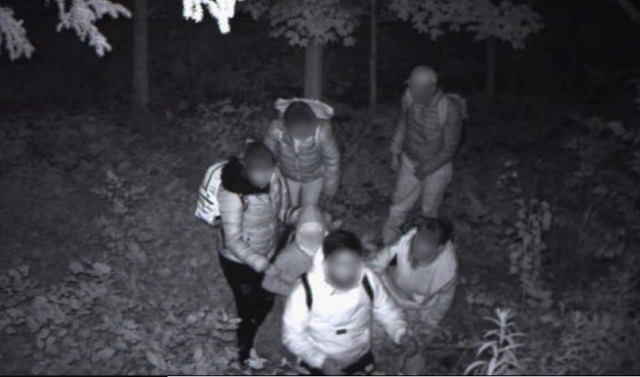
 illegal immigration2 days ago
illegal immigration2 days agoTerrorist watch list apprehensions at northern border continue to break records
-

 espionage1 day ago
espionage1 day agoEXCLUSIVE: House Committee To Investigate Spike In Chinese Illegal Immigration Following DCNF Report
-
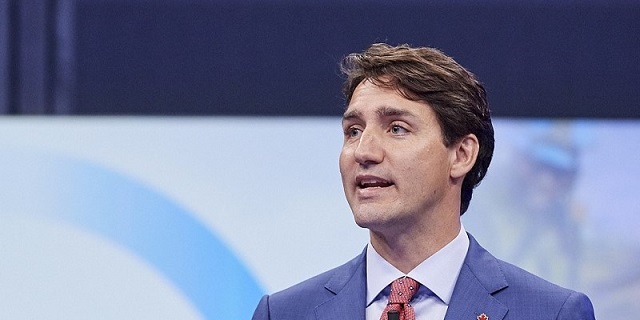
 Automotive20 hours ago
Automotive20 hours agoElectric vehicle mandates mean misery all around
-

 Censorship Industrial Complex1 day ago
Censorship Industrial Complex1 day agoQuebec court greenlights class action suit against YouTube’s COVID-related content censorship
-

 Bruce Dowbiggin11 hours ago
Bruce Dowbiggin11 hours agoGetting Real About Justin’s Real Estate Economy. It Won’t Last








